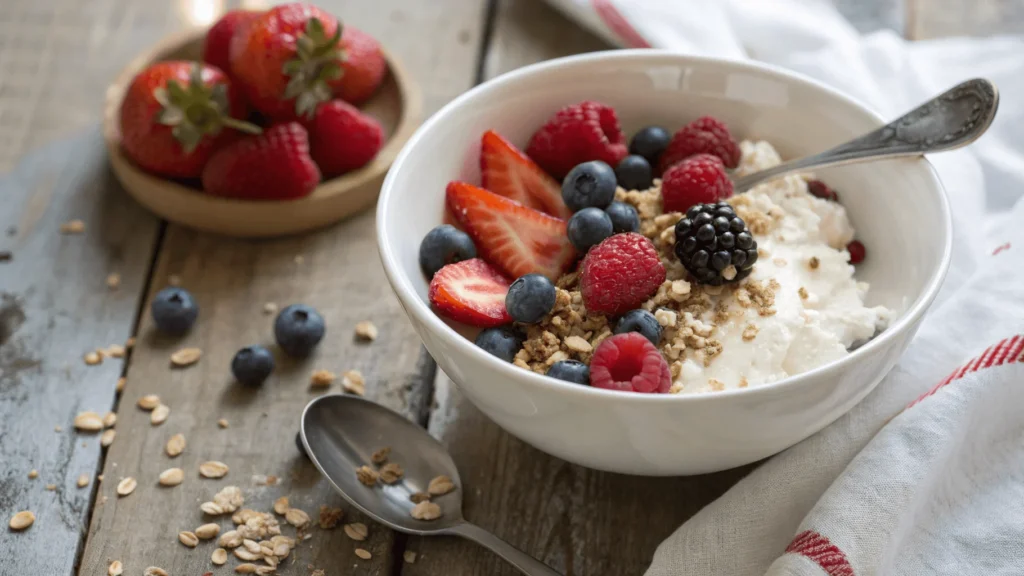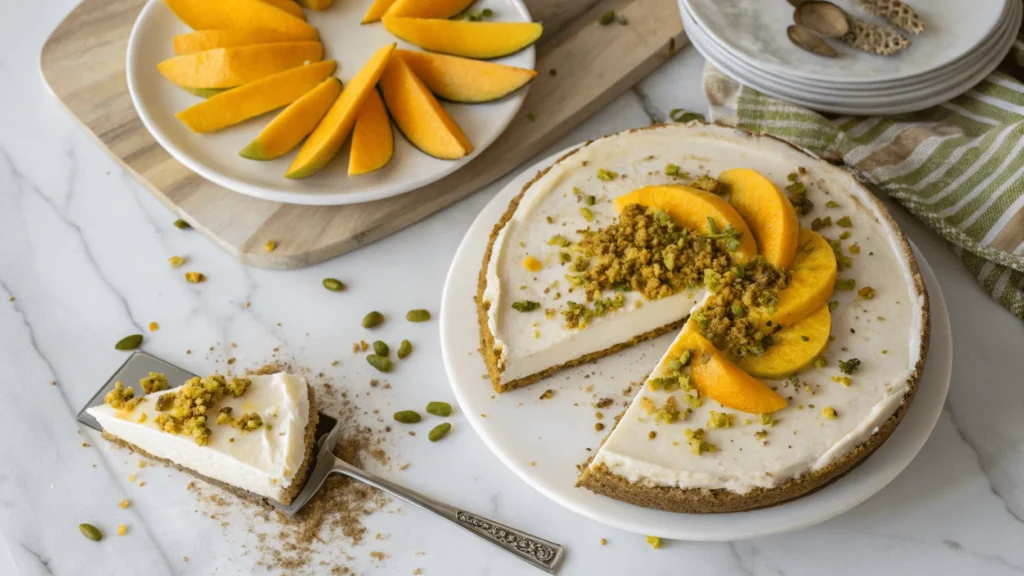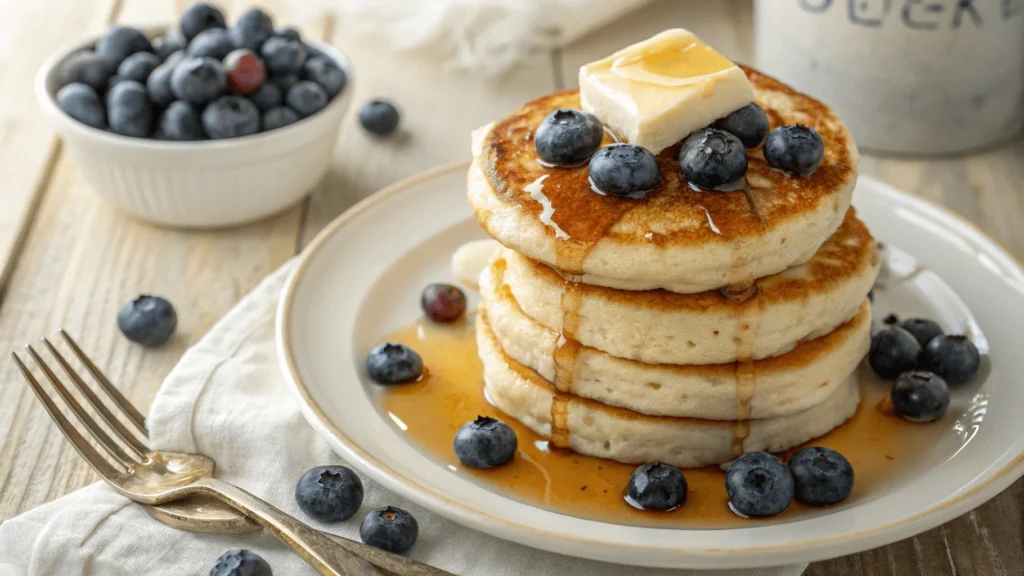When it comes to baking, cottage cheese might not be the first ingredient that comes to mind. But this humble dairy product is a game-changer in the kitchen! Whether you’re whipping up a decadent cheesecake, fluffy pancakes, or hearty bread, cottage cheese adds a unique twist to your recipes. Not only does it enhance texture and moisture, but it also packs a nutritional punch, making it a favorite among health-conscious bakers.
In this article, we’ll dive deep into the world of cottage cheese dessert recipes and beyond. From the science behind its role in baking to practical tips and mouthwatering ideas, you’ll discover why this versatile ingredient deserves a spot in your pantry. Ready to elevate your baking game? Let’s get started!
What Makes Cottage Cheese Unique?

Cottage cheese is a fresh cheese made from curdled milk, known for its mild flavor and lumpy texture. But don’t let its appearance fool you—it’s a powerhouse in baking! Its high moisture content and creamy consistency make it perfect for creating tender, moist baked goods. Plus, it’s a fantastic way to add protein and reduce fat in your recipes without sacrificing flavor.
A Staple in Modern and Traditional Recipes
From classic Eastern European dishes to modern Delicious Cottage Cheese Dessert Recipes You’ll Love, this ingredient has stood the test of time. It’s a staple in dishes like blintzes, cheesecakes, and even savory bread. Today, it’s gaining popularity as a healthier alternative in everything from pancakes to muffins.
Nutritional Perks for Health-Conscious Bakers
If you’re looking to bake smarter, cottage cheese is your ally. It’s rich in protein, calcium, and other essential nutrients, making it a great addition to gluten-free, low-carb, or high-protein diets. Plus, its low-fat varieties can help you cut calories without compromising on taste.
The Science Behind Cottage Cheese in Baking
How Cottage Cheese Affects Texture and Moisture
When it comes to baking, texture is everything. Cottage cheese works wonders here! Its high moisture content keeps baked goods soft and tender, while its creamy texture blends seamlessly into batters and doughs. For instance, in How to Make Cottage Cheese Dessert Recipes: Sweet and Guilt-Free, it creates a smooth, velvety filling that’s hard to resist. Plus, the small curds add a subtle richness without overwhelming the dish.
The Role of Protein and Fat in Cottage Cheese for Baking
Protein is a key player in baking, and cottage cheese is packed with it. This protein helps stabilize batters, giving structure to cakes, muffins, and bread. At the same time, the fat content (even in low-fat versions) adds a touch of richness, making your treats feel indulgent. Whether you’re baking a fluffy pancake or a dense loaf, cottage cheese ensures the perfect balance of lightness and flavor.
Acidity in Cottage Cheese: Impact on Leavening and Flavor
Did you know cottage cheese has a slight tang? This acidity isn’t just for flavor—it also interacts with leavening agents like baking soda. When combined, they create tiny air bubbles that help baked goods rise. This makes cottage cheese a secret weapon for achieving light, airy textures in everything from muffins to cakes.
Cottage Cheese as a Substitute in Baking
Replacing Ricotta or Cream Cheese with Cottage Cheese
Running out of ricotta or cream cheese? No problem! Cottage cheese can step in as a fantastic substitute. Simply blend it until smooth, and you’ll get a similar creamy texture. It works especially well in cottage cheese dessert recipes like cheesecake or cannoli filling. Plus, it’s often lower in fat, making it a healthier choice.
Using Cottage Cheese as a Healthy Alternative to Butter or Oil
Looking to cut calories without sacrificing flavor? Swap out butter or oil for cottage cheese in your recipes. It adds moisture and richness while keeping things light. For example, in muffins or quick breads, cottage cheese can replace half the fat, resulting in a tender crumb and a guilt-free treat.
How Cottage Cheese Enhances Gluten-Free and Low-Carb Baking
For those on gluten-free or low-carb diets, cottage cheese is a lifesaver. Its high protein content helps bind ingredients, making up for the lack of gluten. In low-carb baking, it adds moisture and structure without the extra carbs. Try it in almond flour pancakes or keto-friendly muffins—you won’t be disappointed!
Popular Baked Goods Featuring Cottage Cheese
Cottage Cheese in Cheesecakes: Creamy and Light Results

When it comes to cottage cheese dessert recipes, cheesecake is a standout. Unlike traditional cream cheese-based versions, cottage cheese creates a lighter, less dense texture. Plus, it’s lower in fat, making it a healthier option. Simply blend the cottage cheese until smooth, mix it with eggs, sugar, and a touch of vanilla, and you’ve got a creamy filling that bakes to perfection. Top it with fresh berries or a drizzle of honey for a dessert that’s both indulgent and wholesome.
Cottage Cheese Pancakes: Fluffy and Protein-Packed Breakfast

Who says pancakes can’t be healthy? Adding cottage cheese to your pancake batter not only boosts the protein content but also makes them incredibly fluffy. The curds melt slightly during cooking, creating a tender, melt-in-your-mouth texture. Serve them with maple syrup, fresh fruit, or a dollop of yogurt for a breakfast that’s as nutritious as it is delicious.
Savory Baking: Cottage Cheese in Breads, Muffins, and Scones
Cottage cheese isn’t just for sweets—it shines in savory baked goods too! Try adding it to bread dough for a soft, moist loaf with a subtle tang. Or mix it into muffin or scone batter for a protein boost and a tender crumb. Pair these savory treats with soups or salads for a satisfying meal.
Sweet Treats: Cottage Cheese in Cookies, Cakes, and Pastries
From cookies to cakes, cottage cheese can transform your favorite desserts. In cookies, it adds moisture and chewiness, while in cakes, it creates a light, airy texture. Even pastries like Danish or turnovers benefit from its creamy richness. Experiment with cottage cheese dessert recipes to discover new favorites!
Tips and Tricks for Baking with Cottage Cheese
How to Blend Cottage Cheese for a Smooth Texture
One of the keys to using cottage cheese in baking is achieving a smooth texture. Simply toss it in a blender or food processor until creamy. This works especially well for cottage cheese dessert recipes like cheesecake or frosting, where lumps can be a distraction.
Choosing the Right Type of Cottage Cheese for Baking
Not all cottage cheese is created equal. For baking, opt for small-curd, low-fat varieties unless the recipe specifies otherwise. Large-curd or full-fat versions can alter the texture, so stick to what’s recommended for the best results.
Avoiding Common Mistakes When Using Cottage Cheese in Recipes
While cottage cheese is versatile, there are a few pitfalls to avoid. First, don’t skip blending it if the recipe calls for a smooth texture. Second, be mindful of its salt content—some brands can be salty, which might affect the flavor of your baked goods. Lastly, always drain excess liquid to prevent your batter from becoming too wet.
Creative Ways to Use Cottage Cheese in Baking
Experimenting with Flavors: Sweet and Savory Combinations
Cottage cheese is incredibly versatile, making it perfect for both sweet and savory bakes. For cottage cheese dessert recipes,For What’s Good To Mix In Cottage Cheese? Top Combinations, try pairing it with fruits like berries, peaches, or pineapple. On the savory side, mix it with herbs, garlic, or sun-dried tomatoes for breads and muffins. The possibilities are endless!
Incorporating Cottage Cheese into Frostings and Fillings
Did you know cottage cheese can be the star of your frostings and fillings? Blend it until smooth, then mix with a bit of honey or powdered sugar for a creamy, protein-packed frosting. It’s a healthier alternative to traditional buttercream and works wonderfully in cakes and cupcakes.
Adding a Protein Boost to Breakfast Bakes
Start your day right by adding cottage cheese to breakfast bakes like muffins, scones, or breakfast bars. It not only enhances the texture but also keeps you full and energized throughout the morning. Try it in a batch of blueberry muffins or savory breakfast bread—you’ll love the results!
Nutritional Benefits of Cottage Cheese in Baking
High Protein Content for Health-Conscious Bakers
If you’re looking to add more protein to your diet, cottage cheese is a fantastic choice. Just one cup packs about 25 grams of protein, making it a star ingredient in cottage cheese dessert recipes. This not only keeps you fuller for longer but also helps build and repair muscles. Whether you’re baking pancakes, muffins, or cheesecake, you’re giving your treats a nutritious boost.
Low-Calorie and Low-Fat Options for Diet-Friendly Baking
For those watching their calorie intake, cottage cheese is a game-changer. Low-fat and fat-free versions are widely available, allowing you to enjoy your favorite baked goods without the guilt. Plus, its creamy texture means you won’t miss the extra fat. It’s a win-win for anyone looking to bake healthier!
Rich in Calcium and Other Essential Nutrients
Cottage cheese isn’t just about protein—it’s also a great source of calcium, which is essential for strong bones and teeth. Additionally, it contains vitamins like B12 and minerals like phosphorus. By incorporating it into your baking, you’re not just making delicious treats but also nourishing your body.
FAQs
Can I Use Cottage Cheese Instead of Yogurt in Baking?
Absolutely! Cottage cheese can be a great substitute for yogurt in many recipes. Just blend it until smooth to match yogurt’s consistency. It works especially well in cottage cheese dessert recipes like cakes and muffins, adding moisture and a subtle tang.
Does Cottage Cheese Melt in Baked Goods?
While cottage cheese doesn’t melt like mozzarella, it does soften and blend into batters and doughs during baking. This helps create a moist, tender texture in everything from bread to cheesecake.
How Do I Store Baked Goods Made with Cottage Cheese?
Baked goods with cottage cheese should be stored in an airtight container in the fridge. They’ll stay fresh for up to 3-4 days. For longer storage, consider freezing them. Just thaw at room temperature before serving.
Is Cottage Cheese Suitable for Vegan Baking?
Unfortunately, traditional cottage cheese is a dairy product, so it’s not vegan. However, there are plant-based alternatives made from soy or nuts that can mimic its texture and flavor. These can be used in vegan cottage cheese dessert recipes with great results.
Conclusion
From its ability to create moist, tender textures to its impressive nutritional profile, cottage cheese is a true baking powerhouse. Whether you’re whipping up cottage cheese dessert recipes like cheesecake and pancakes or experimenting with savory breads and muffins, this versatile ingredient adds both flavor and health benefits to your creations.
Not only does it enhance the texture and moisture of baked goods, but it also serves as a healthier alternative to higher-fat ingredients like butter, cream cheese, or oil. Plus, its high protein content makes it a favorite among fitness enthusiasts and health-conscious bakers alike.
So, the next time you’re in the kitchen, don’t overlook that tub of cottage cheese in your fridge. Whether you’re baking for breakfast, dessert, or a savory snack, it’s sure to elevate your recipes and impress your taste buds. Ready to get started? Dive into the world of cottage cheese baking and discover a whole new way to enjoy your favorite treats!
For more inspiration, check out our collection of cottage cheese dessert recipes and explore the endless possibilities this humble ingredient has to offer. Happy baking!





